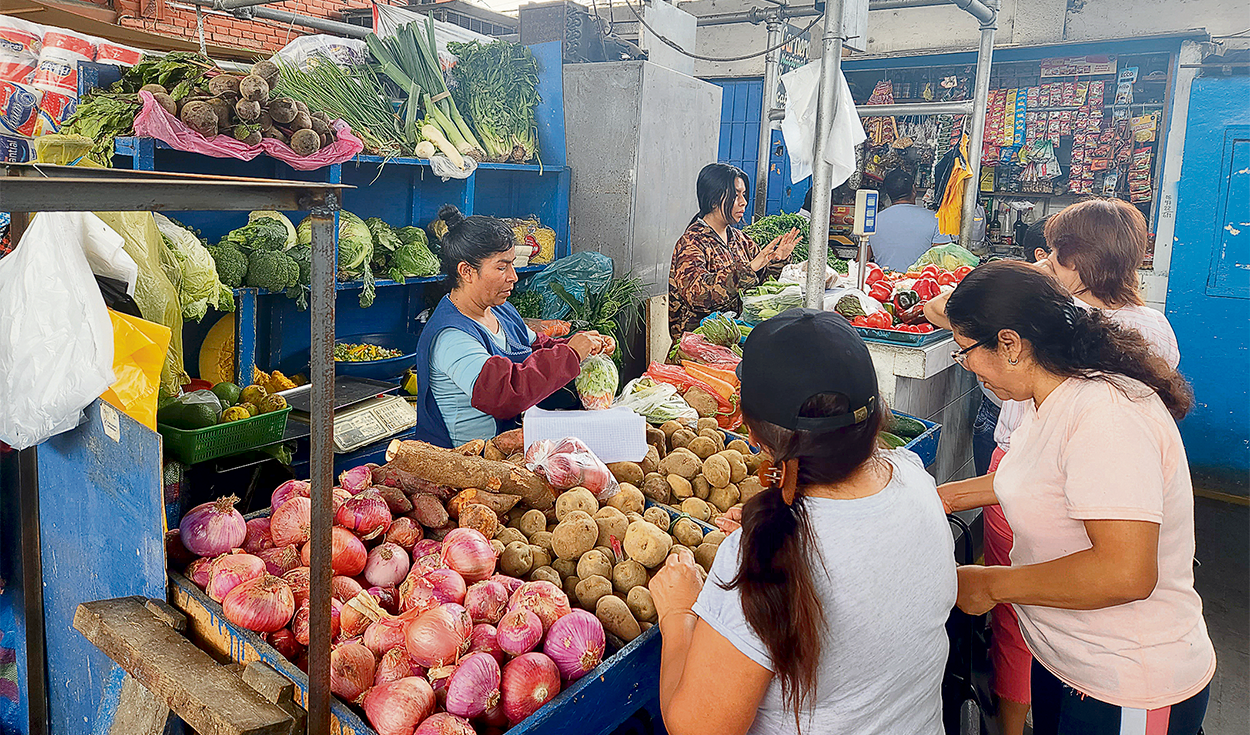
For the third consecutive year, the restrictive monetary policies of the Central Reserve Bank (BCRP) failed to keep inflation in Peru at the planned annual goal, and the Consumer Price Index (CPI) recorded new progress of 3.24% in 2023, according to INEI.
According to the organization, only in December inflation had an increase of 0.41%, after decreases were reported in the previous two months.
At the national level, the consumer price index closed last year at 3.41%, below the data for 2021 and 2022, which stood at 6.99% and 8.56%, respectively.
The overall result of the CPI for Metropolitan Lima reported by INEI was mainly influenced by the behavior of prices observed in the Transportation consumption divisions, which presented an increase of 1.12%; Food and Non-Alcoholic Beverages, with 0.79%; Restaurants and Hotels, 0.25%; Miscellaneous Goods and Services, with 0.18%; and Recreation and Culture, 0.12%, these divisions explaining 96% of the month’s result (0.41%).
In recent months, a downward trajectory of 12-month accumulated inflation had already been seen, especially in October and November, when the data showed a negative rate. In December, the rate was positive and even higher than usual.
It happens that the average December rate in recent years has been below 0.3%; However, the data for the last month of 2023 indicates that market prices have been higher than usual.
It should be noted that the president of the BCRP, Julio Velarde, had estimated that the inflation rate in our country could return to the target range levels of between 1% and 3% that month.
It was not like that and, according to economist Juan Carlos Odar, Lima consolidated itself as one of the cities that in these 3 years of inflation above the goal (2021-23), has accumulated the lowest price increase: 19.2%. It is a similar rate to that of Puno (6% per year). There were smaller increases only in Moyobamba (18.9%, 5.9% annual average) and Iquitos (17.1%, 5.4% per year).
However, the director of Phase Consultores highlights that Peruvian inflation remains quite close to said range and considers that “it is quite likely that, until March, we will already be consolidated in it.”
“Compared to other countries, we are showing a faster fall in inflation. There are countries, like Colombia, where inflation has been slow to subside even though the exchange rate fell earlier,” Odar emphasizes.
In addition, he assures that interest rates could continue their clear de-escalation in the meeting that the issuing entity will hold next week, as long as there is greater clarity about the intensity of El Niño in the summer of 2024.
Recently, the BCRP reduced the reference interest rate again to 6.75%, thereby boosting credit.
Disparate inflation by regions in 2023
The cities that closed 2023 with the highest accumulated inflation were Trujillo, Chiclayo and Arequipa. Another 6 cities, including Piura, achieved inflation between 1% and 3%. Only in Iquitos was annual inflation less than 1%.
The greatest accumulated increases in 3 years were Huaraz (29.6% or 9% on annual average), Chachapoyas (27.2%, 8.4%) and Puerto Maldonado (25%, 7.7%). The latter closed 2023 in the range (2.9%), but the accumulated rate as of February had been 8.7%.
The numbers
- 6.75% is the reference rate that the BCRP manages so far.
- -0.77% the CPI for Machinery and Equipment in Metropolitan Lima fell in December.
The word
Juan Carlos Odar, economist at Phase Consultores
“The high rate was a factor to mitigate inflation, since monetary policy does not have immediate effects. If they had lowered it earlier, inflation in mid-2024 would probably be higher.”
Source: Larepublica
Alia is a professional author and journalist, working at 247 news agency. She writes on various topics from economy news to general interest pieces, providing readers with relevant and informative content. With years of experience, she brings a unique perspective and in-depth analysis to her work.












